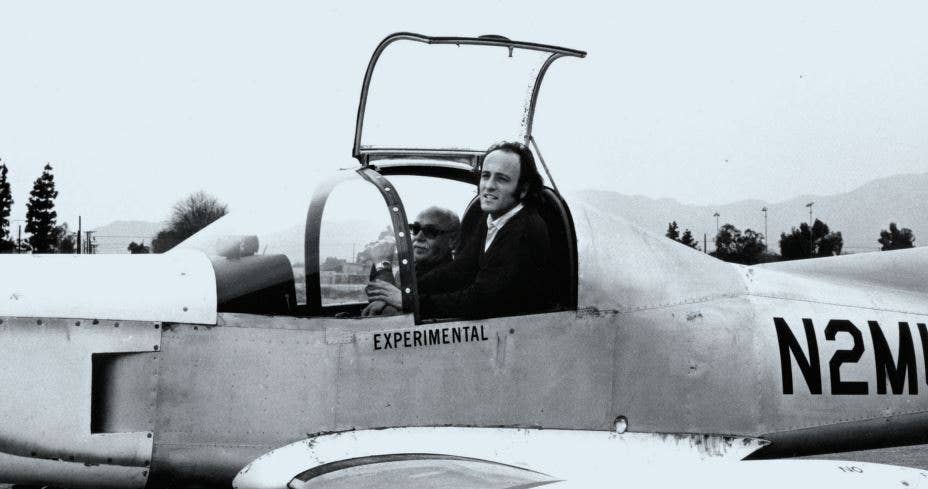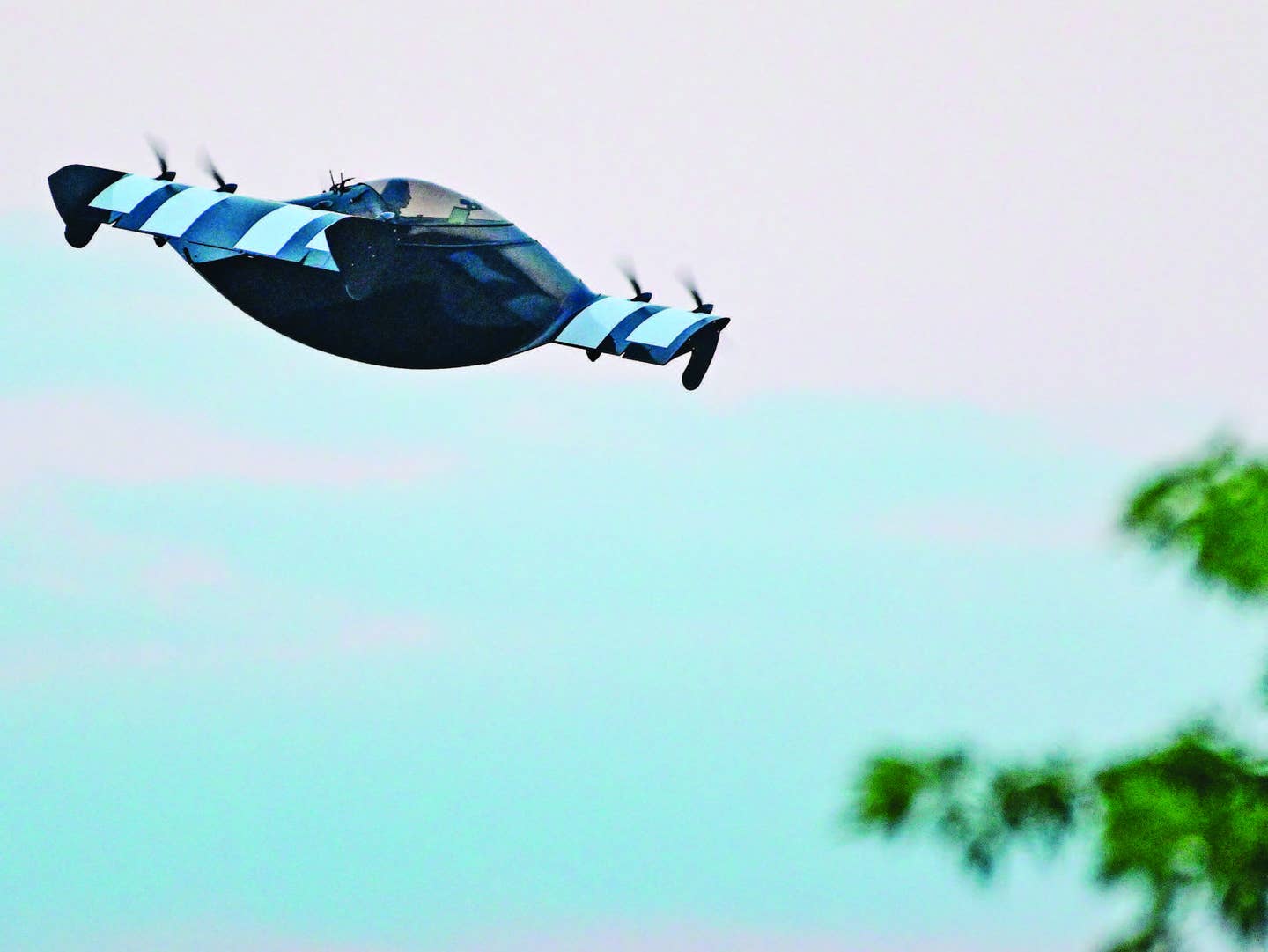The Propagation of a Broken Crankshaft
The fatigue crack had been with us from the start, biding its time, nibbling at the heart of the engine.

The author with Robert Parke in “Melmoth,” circa 1974. [Photo courtesy of Peter Garrison]
It was the spring of 1979. Robert Parke, then FLYING’s editor, was in Los Angeles. His next stop was Reno, and of course I offered to fly him there. My homemade airplane, Melmoth, had by then successfully crossed both the Atlantic and the Pacific, and so the intrepid Parke, who had piloted B-17s over Europe in World War II, was willing to chance it.
It was a clear, calm day. We climbed out of Whiteman Airport (KWHP) and through the Newhall Pass, turning northwestward toward Gorman. I leveled out at 10,500 feet. Mount Pinos crept past our left wing and the vast flatness of the San Joaquin Valley lay fading into the haze before us.
If you're not already a subscriber, what are you waiting for? Subscribe today to get the issue as soon as it is released in either Print or Digital formats.
Subscribe NowHow do you know something is wrong? Sometimes it’s obvious: a big noise, shaking, smoke, pieces flying off. But sometimes it’s so subtle that you ask yourself if you’re imagining things. There was something different about the hum of the engine. Crossing oceans, out of sight of land for 10 hours, I had become intimately acquainted with automatic rough. I knew how an anxious mind could tease ominous signals out of the engine’s chaotic noise. But now the engine was not rough—it was just different.
I clicked through the EGTs. Nothing there. I fiddled with the mixture. Nothing. But whatever it was, it was getting worse. “There’s something funny about the engine,” I said to Bob. He reacted with a characteristic face that meant, as far as I could tell, “Hmm."
The change grew more insistent, harsher, impossible to ignore. I checked the mags. Roughness on the right—that must be the problem. I decided to land at the earliest convenience, which in this case meant Porterville.
Once on the ground, we opened up the cowling, unscrewed the inspection plug in the right mag, and peered inside. Well, that was easy. Some teeth were stripped from the plastic timing gear.
I’ve forgotten now—I don’t possess the faculty of total recall apparently enjoyed by other autobiographers—what became of Bob, but obviously, he jumped ship and found a car to Bakersfield and a flight to Reno. I waited while the local A&P pulled the mag, rebuilt it, and put it back onto the engine. I did a runup; all OK. I paid the bill and taxied to the runway.
Full throttle, rotate, gear up. Only when I was in the air did I realize that I was not seeing the expected 2,800 rpm, just 2,600, and the engine still felt funny. I went around the pattern at 500 feet, landed, taxied in, and parked the airplane.
It was evening now, and I was stranded. I called a friend, Mike Melvill, chief test pilot at Burt Rutan’s operation at Mojave. Could he come rescue me? Sure. It was night when he landed in his VariViggen, a queer-looking, tandem-seat, wooden delta-wing canard that was Burt’s first offering to the homebuilding world. Mike, a machinist by trade, had built the airplane while living in Indiana with his wife, Sally (they had been teenage runaways in South Africa, but that’s another story). He had brought it out to show to Burt, who promptly offered him a job with the nascent Rutan Aircraft Factory and an opportunity to live in unappetizing Mojave. In a particularly lucky gamble, Mike took the job and ended up becoming the world’s first civilian astronaut.
But that was later. Now, we made the starlit flight over the mountains back to Whiteman, where he dropped me off, waved away my thanks, and disappeared into the darkness.
It took me a couple of days to rustle up a big trailer from John Thorp and a suitable tow vehicle, a pale blue and cream ’57 Ford pickup from Homer Knapp, a legendary North Hollywood motorcycle machinist who would let me make parts in his shop. Early one morning, Homer and I drove to Porterville.
Getting Melmoth, whose gear track was 11 feet, onto the 8-foot-wide trailer was not easy. Homer, a resourceful man, figured it out using some irrigation pipe and two-by-eights he picked up somewhere. We weren’t street legal, but we figured we looked strange enough that other cars would give us a wide berth. It was night when we drove back over the mile-high pass that separates the San Joaquin Valley from Los Angeles. We left the trailer and its cargo in front of my hangar.
When I returned in the morning, one of the trailer’s tires was flat. It had timed its failure considerately.
I took the engine off the airplane and delivered it to Mike Attolico at Western Cylinder, who had overhauled it five years earlier. It wasn’t until well into a full teardown, when they detached the No. 1 connecting rod from the crankshaft, that they phoned me to come have a look.
The crankshaft was broken.
The rear cheek of the No. 1 throw had parted clean through. Because the break was at the back end of the crankshaft, the engine had continued to develop power. The two pieces of the broken cheek had remained interlocked by the angle of the fracture and had continued to drive the accessories and the mags. The small, rapidly oscillating slippage between the two parts of the crank had broken the teeth on the right mag’s timing gear and was also the cause of the unfamiliar vibration I first felt.
So, now, I could boast the twin distinctions of having, first, experienced a broken crankshaft, and, second, taken off and flown around the pattern with one.
I sent the smaller piece of the crank to Glenn Dail, an investigator at the National Transportation Safety Board. “This did create quite a bit of interest among the metallurgists at NARF [Naval Air Rework Facility] Norfolk,” he wrote back in December. “Classic fatigue, it is.” It seems that most cranks that fail—not many do—fail near the propeller end. In this case, a fatigue crack had begun just below the surface at an “inclusion,” a tiny pellet of non-metallic material, and had gradually propagated outward, weakening the crank until it broke. All steel contains inclusions—this one just happened to be close to the surface, in the radius at the highly stressed boundary between the cheek and the journal.
“It could have begun somewhere just south of Shemya,” Glenn cheerfully wrote, referring to the lonely island at the tip of the Aleutian chain that Nancy and I had passed when flying in Melmoth to Japan three years earlier.
There was something to think about. How long, really, had that crack been propagating? No way to know. But the seed of it had been with us from the start, biding its time, nibbling at the heart of the engine, a secret saboteur who knew no difference between Porterville, California, and the middle of the North Pacific Ocean. But oh, the difference to us!
This column was originally published in the December 2022/January 2023 Issue 933 of FLYING.

Sign-up for newsletters & special offers!
Get the latest FLYING stories & special offers delivered directly to your inbox







